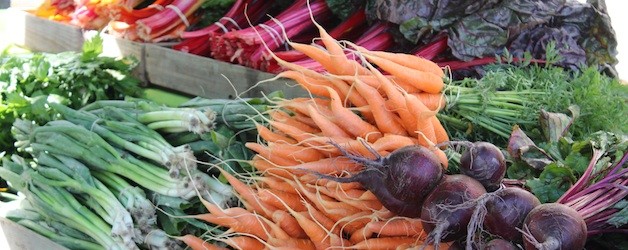

The Great Veggie Challenge
Why do we need to eat vegetables every day?
Vegetables have an incredible nutrient to calorie ratio. Vegetables are so low in calories that it is almost impossible to gain weight eating them. Vegetables are a rich source of vitamins and phytonutrients and are packed with fiber. All of these are critical to the short- and long-term health of growing children — and adults.
Shocking!
Last weekend we met with Michael Jones, Chef and Executive Director of Local Matters, in Columbus, Ohio. He shared this shocking statistic that left us examining our own veggie intake, and, as always, wondering how to make it easier for all families to increase the amount of vegetables in their daily meals.*
The average American’s daily caloric intake:
- 51% from processed foods (cereals, breads, crackers, chips, cookies, cakes, soft drinks, etc.).
- 42% from meat, eggs, or dairy.
- 7% from vegetables, fruits, legumes, whole grains, nuts, and seeds — foods the human body needs to prevent disease and are optimum for overall health.
* The source for this statistic is Appetite for Profit: How the Food Industry Undermines our Health and How to Fight Back by Michele Simon.
5 Fast and Easy Ways to Eat More Vegetables
Think outside the vegetable bin:
1. Stock your pantry, refrigerator, and freezer with vegetables – if you have them in the house you are much more likely to eat them!
- Pantry – pack the pantry with long-storage vegetables: pickled vegetables, sundried tomatoes, dried seaweed, canned vegetables, vegetable soups, and sauces.
- Refrigerator – load the vegetable drawer with your favorite vegetables and the shelves with containers of cleaned and chopped vegetables ready for snacking and cooking.
- Freezer – frozen vegetables are a nutritious option as they are harvested and frozen at the peak of freshness. They maintain their quality for a long period in the freezer.
2. Prep – have containers of washed and chopped veggies in the refrigerator ready for snacking, adding to soups, salads, omelets, sandwiches, and meals. You’ll be much more likely to grab some vegetables for a snack or meal if they are already cleaned and cut up (think of a whole cucumber vs. peeled slices). Take an hour after grocery shopping or on the weekend to prepare cucumber, carrots, celery, jicima, cauliflower, broccoli, and radishes.
3. Post a list of ideas/options in your kitchen. Having a list posted is very helpful when you are looking to have a snack, pack a lunch, or prepare dinner. See our lunch ideas list for a sample.
4. Load up soup, sauces, and smoothies with vegetables. Even though fresh produce is beginning to wane as fall progresses into winter, the seasonal foods are perfect for adding a great variety of vegetables. Soups, stews, pasta sauces, casseroles, and even breakfast smoothies are an open invitation to add lots of veggies.
5. Roast vegetables and serve warm, room-temperature, or cold. See our post on roasted vegetables for a recipes and lots of ideas.
Take the challenge and increase your veggies — starting today!
